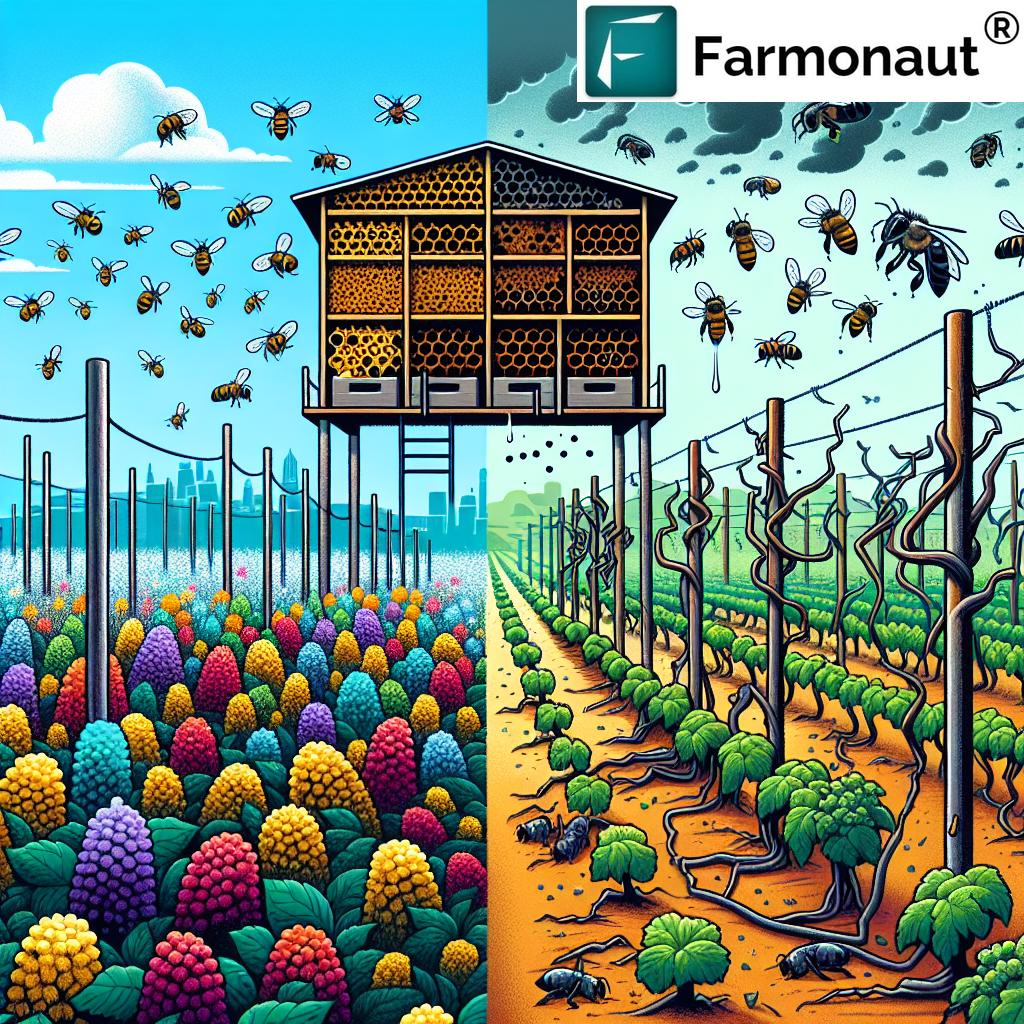Revolutionary Crop Growth Regulators Supercharge Agricultural Yields and Food Security
In a groundbreaking development for the agricultural sector, crop growth regulators (CGRs) are emerging as a game-changing solution for agricultural yield enhancement and bolstering global food security. As climate change and population growth continue to pose challenges to food production, these innovative compounds are revolutionizing farming practices and offering new hope for sustainable agriculture.

The Rise of Crop Growth Regulators in Modern Agriculture
According to a recent report by Fact.MR, the global crop growth regulator market is set to reach an impressive US$ 3.68 billion in 2024, with projections indicating a robust CAGR of 6.7% between 2024 and 2034. This surge in demand underscores the growing recognition of CGRs as essential tools in modern farming.
Crop growth regulators are synthetic substances that mimic or disrupt plant hormones, offering farmers unprecedented control over various aspects of plant growth and development. From controlling plant height to managing fruit ripening, CGRs are becoming indispensable in addressing a wide range of agricultural challenges.
Key Benefits of Crop Growth Regulators
- Enhanced Yield: CGRs optimize resource allocation within plants, leading to significant increases in crop yields.
- Improved Crop Quality: By regulating growth processes, these compounds contribute to better overall crop quality.
- Extended Shelf Life: CGRs can prolong the shelf life of produce, reducing post-harvest losses.
- Stress Tolerance: These regulators help plants better withstand environmental stresses, a crucial factor in the face of climate change.
The versatility of crop growth regulators for yield enhancement makes them particularly valuable in addressing food security concerns. As agriculture faces increasing challenges, including unpredictable weather patterns and the need for sustainable intensification, CGRs are proving to be vital components in farming strategies.
Advanced Plant Hormone Regulation Technology
The effectiveness of CGRs lies in their ability to manipulate plant hormones with precision. This advanced plant hormone regulation technology allows farmers to fine-tune crop development according to specific needs and environmental conditions.
For instance, gibberellins, a class of CGRs, can promote stem elongation and fruit development, while auxins play a crucial role in root development and fruit set. By carefully applying these regulators, farmers can optimize crop growth at various stages, leading to improved yields and quality.

Sustainable Agriculture with Growth Regulators
Sustainable agriculture with growth regulators is becoming increasingly important as the world grapples with environmental challenges. CGRs contribute to sustainability in several ways:
- Reduced Water Usage: By optimizing plant growth, CGRs can help crops use water more efficiently.
- Decreased Fertilizer Requirements: Improved nutrient uptake means less fertilizer is needed.
- Enhanced Pest and Disease Resistance: Some CGRs can boost plants’ natural defense mechanisms.
- Minimized Environmental Impact: Targeted application of CGRs reduces the overall use of agricultural chemicals.
For farmers looking to implement these advanced techniques, Farmonaut’s satellite-based crop monitoring app can be an invaluable tool. It provides real-time insights into crop health and growth, enabling precise application of CGRs.
Nanotechnology in Crop Growth Regulation
The integration of nanotechnology in crop growth regulation marks a significant advancement in CGR efficiency. Nano-formulations of CGRs offer several benefits:
- Enhanced Absorption: Nanoparticles can penetrate plant tissues more effectively.
- Controlled Release: Slow-release formulations provide sustained effects over time.
- Reduced Environmental Impact: Lower application rates are needed for the same results.
These innovations in nanotechnology in agriculture are not only improving the effectiveness of CGRs but also addressing concerns about their environmental impact.
Bio-based Plant Growth Regulators for Agriculture
The development of bio-based plant growth regulators for agriculture represents a significant trend in the CGR market. These natural alternatives are derived from plant extracts, microorganisms, or other biological sources and offer several advantages:
- Eco-Friendly: They have minimal environmental impact and are biodegradable.
- Organic Farming Compatible: Bio-based CGRs can be used in organic agriculture.
- Reduced Residues: They leave fewer chemical residues on crops.
The shift towards bio-based CGRs aligns with the growing consumer demand for organic and sustainably produced food.
Precision Farming with Crop Growth Regulators
Precision farming with crop growth regulators is revolutionizing agricultural practices. By combining CGRs with advanced technologies like GPS, remote sensing, and data analytics, farmers can apply these regulators with unprecedented accuracy.
Farmonaut’s satellite-based API and developer documentation provide valuable resources for integrating precision farming techniques with CGR application.
Food Security Solutions Using Growth Regulators
The role of CGRs in addressing global food security cannot be overstated. As food security solutions using growth regulators gain traction, their impact is being felt across various aspects of agriculture:
- Increased Productivity: CGRs help maximize yields from existing agricultural land.
- Climate Resilience: They enhance crops’ ability to withstand environmental stresses.
- Reduced Food Waste: By extending shelf life, CGRs help minimize post-harvest losses.
- Improved Nutrition: Some CGRs can enhance the nutritional content of crops.
Future Outlook and Challenges
While the potential of crop growth regulators is immense, challenges remain. Regulatory frameworks need to evolve to keep pace with technological advancements. Additionally, ongoing research is crucial to fully understand the long-term impacts of CGRs on ecosystems and human health.
As the agricultural sector continues to embrace these innovations, tools like Farmonaut’s mobile apps for Android and iOS are becoming essential for farmers looking to optimize their use of CGRs.
Conclusion
The revolution in crop growth regulators represents a significant leap forward in agricultural technology. As we face the dual challenges of feeding a growing global population and adapting to climate change, CGRs offer a powerful tool for enhancing yields, improving crop quality, and ensuring food security.
With ongoing advancements in nanotechnology, bio-based formulations, and precision farming techniques, the future of agriculture with crop growth regulators looks promising. As these technologies continue to evolve, they will play an increasingly crucial role in shaping a more sustainable and food-secure world.















